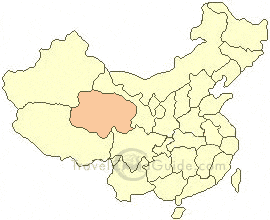Evolution of the deadliest H5N1 strain
 Commentary from Recombinomics:
Commentary from Recombinomics:
"Evolution of Qinghai H5N1 Bird Flu
May 9, 2006
Today is the one year anniversary of the reporting of the H5N1 outbreak at Qinghai Lake. In the past 12 months the Qinghai strain of H5N1 has migrated through Russia, Mongolia, Kazakhstan, Europe, the Middle East, and Africa. This explosion is without precedent and was driven by H5N1 in long range migratory birds.
The sequences of 16 isolates from Qinghai Lake were made public in July. Although the genes were most closely related to H5N1 from South Korea/ Japan or Guangdong Province in China, the sequences were unique and had some polymorphisms linked to Vietnam and others to isolates from Europe.
The isolates were particularly virulent, killing experimental chickens in 20 hours or less, and killing experimental mice in 3-4 days. The lethality in mice may have been linked to a polymorphism that had not been seen previously in H5N1 isolates from birds. PB2 E627K was a human polymorphism and was present in all H1, H2, and H3 isolates from humans. It was also in some H5N1 isolates from patients or cats and was associated with a poor prognosis. Almost all mammalian infections were fatal. In addition, lab experiments showed that E627K was associated with virulence in mice and the polymorphism increased polymerase activity at lower temperatures (33 C).
As noted in the summary on the Qinghai strain emergence, the Qinghai outbreak was followed by outbreaks in nature reserves in Russia and Mongolia. The presence of H5N1 in over 2 dozen bird species in southern Siberia suggested that H5N1 would soon spread through Europe, the Middle East, and Africa.
At the beginning of 2006, the first human case of Qinghai H5N1 was reported. The cluster in Turkey was large and the H5 had acquired S227N, a change in the receptor binding domain that increased binding for human receptors in the upper respiratory tract. This change was predicted because H9N2 isolates in the Middle East contained donor sequence that would allow recombinants to acquire this change.
S227N was not reported in subsequent Qinghai H5N1 isolates in the area, including human isolates from Iraq and Egypt. Qinghai isolates did have some regional differences, but most of the regional polymorphisms traced back to H5N1 in Asia. However, there were some North American polymorphisms, suggesting that H5N1 had moved into North America earlier in the season.
Qinghai isolates have also been reported in Liaoning Province in China. However, the human cases in China had sequences found in the Fujian strain of H5N1. This strain has recently also been noted in Laos and Malaysia. Thus, China has two strains co-circulating that case H5N1 infections in humans.
Recent sequence data on a human isolate from Indonesia identifies yet another H5N1 strain. This strain has a genetic background that matches earlier isolates from Indonesian poultry, but the human isolate has additional polymorphisms found in Vietnam, Thailand, and wild bird isolates in China, including the Qinghai strain. Thus, H5N1 in China frequently recombines with other H5N1 isolates to rapidly evolve.
Recent reports from Qinghai province indicated new H5N1 infections were found in bar headed geese in two counties. These recent infections signal migration back to Qinghai, which will come from India as well as east and southeast Asia. These birds will then migrate to Chany Lake in southern Siberia, where there will be H5N1 infected birds from Europe, the Middle East and Asia.
This in the first 12 months many of the Qinghai isolates flew into regions where H5N1 had not been previously reported. H5N1 was seeded locally on these regions, but the H5N1 will be returning to Russia to mix with H5N1 from Qinghai Lake, leading to significant evolution in the Qinghai strain, which will then migrate south in the fall into regions where H5N1 was seeded in the past 12 months."






No comments:
Post a Comment